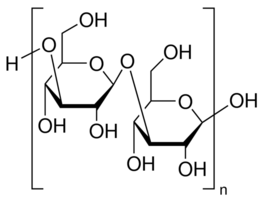Detection of the fungal cell wall component β-1,3-D-glucan (BDG) in serum is useful in diagnosing Pneumocystis jirovecii pneumonia and invasive fungal infections including Candida or Aspergillus. It can also be detected in the CSF of patients with cryptococcal meningitis. While it has a lower sensitivity than CrAg testing, BDG has the advantage that its titre falls rapidly upon clearance of the infection, which may be useful in diagnosing recurrent infections (Rhein et al, 2014).

How it works
The assay measures activation of factor G of the coagulation cascade of the horseshoe crab Limulus polyphemus. These creatures are remarkably ancient and have evolved very little over the last 450 million years.

Structure of BDG polymer 
Harvesting blood from Limulus polyphemus (image from the Atlantic)

Available assays
- Fungitell (kinetic colorimetric assay)
- Wako Pure Chemical Industries (β-Glucan Test, kinetic turbidimetric assay )
- Dynamiker (Fungus (1-3)–β-D-glucan Assay)
- Era Biology (Fungus (1-3)–β-D-glucan Test)
For a direct comparison of the Wako and Era Biology β-D-Glucan tests see Song et al, 2021.

Diagnostics webinar

Video protocols & lectures

Performance
Some fungi produce very little or no BDG, notably Cryptococcus spp. and most of the Mucorales, and so these infections will not be detected with glucan measurement. Candida parapsilosis candidaemia may have lower BDG levels than expected (Mikulska et al, 2016). Glucan is detectable in the CSF of patients with coccidioidal meningitis (Stevens et al, 2016). Some extraneous materials will produce false positive assays, including cotton or rayon surgical swabs (persisting for a few days after surgery), blood transfusion, albumin and immunoglobulin infusions and haemodialysis.
In the diagnosis of Pneumocystis pneumonia, a meta-analysis indicated a diagnostic sensitivity and specificity of 96% and 84%, with a diagnostic odds ratio of 102 (Onishi et al, 2011). For invasive fungal infections in many different patient populations, it had a sensitivity of 80% and specificity of 82% with a diagnostic odds ratio of 26. For candidaemia, the Fungitell assay has a sensitivity of 87% and the Wako single sample assay (newly launched) has as lower sensitivity of 43%, with both assays having an very high negative predictive value of >99%.

There is also uncertainty about the sensitivity in terms of an early diagnosis, especially for invasive aspergillosis during profound neutropenia. Glucan levels do decline on antifungal treatment, but do so erratically and slowly cannot be used to assess response to therapy.
As glucan is present in large quantities in almost all environments, manufacture of glucan kits is difficult and stringent precautions must be taken in the laboratory to minimise external contamination. The dynamic range and positive cut-offs differ between kits.
